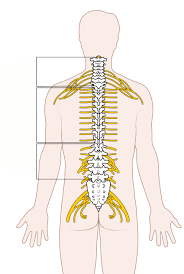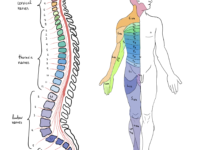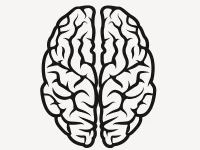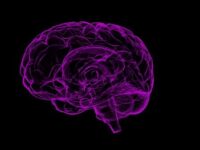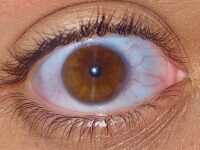Currently affecting millions of people worldwide, major depressive disorder (MDD) is a serious and chronic mental health condition whose prevalence has only been exacerbated by the recent COVID-19 pandemic. Symptoms include consistently low mood, lack of energy, changes in sleep or appetite, and suicidal thoughts and feelings. A variety of biological, environmental, and psychological factors can cause MDD. Though the disorder cannot be completely cured, various methods exist to manage the condition and improve patients’ quality of life. The best treatment option varies based on an individual’s specific situation, but some examples are psychotherapy, medication, and electroconvulsive therapy.
Recently, researchers at the University of Cincinnati have found that electrical stimulation of the spinal cord can effectively treat the symptoms of MDD. The spinal cord is essential for connecting the brain and body and contains neural pathways involved in emotional experiences and feelings. Spinal cord stimulation focuses on depression caused by the overloading of this brain-body pathway. If the pathways are working as they should, the brain is sent information that it can consistently use for mood regulation. However, when information overwhelms these pathways, such as due to chronic stress or hypertension, the brain-body circuit will become hyperactive and burn out over time. Once the system burns out, the brain cannot adjust and regulate mood as effectively.
The process of spinal cord stimulation involves placing electrodes on a patient’s back along their spinal cord and sending electrical impulses through a remote control. This method has been primarily used for pain relief and improvement in psychosocial functioning, and the applications for MDD are currently being explored. If a small electrical current is run through the spinal cord, the flow of information into the brain-body circuit will decrease, preventing potential system overloads and allowing the brain to readjust and better regulate mood levels. Over an eight-week trial, a research team from the University of Cincinnati conducted this spinal cord stimulation technique on 20 adults aged 18–55 years who were diagnosed with MDD or had moderate MDD symptoms. The results showed that those who received the electrical stimulation had a more significant decrease in their depressive symptoms than those in the control group.
“While the study displayed positive impacts in treating MDD, there were mild side effects to the trial and potential safety concerns about spinal cord stimulation.”
While the study displayed positive impacts in treating MDD, there were mild side effects to the trial and potential safety concerns about spinal cord stimulation. Some participants experienced skin redness, brief itchiness, or burning sensations at the stimulation site, though side effects did not last very long after treatment sessions. Potential risks for the spinal cord stimulation technique include the risk of infection around the hardware, and device malfunctions. Due to advances in procedures and technology, these events have become less common, however.
“The results of this initial study look very promising for the future of MDD treatments, potentially saving hundreds of lives.”
However, the small sample size of 20 people limits confidence in the results. In future studies, the research team plans to run the trial on a larger group and vary the strength of the current to find an optimal level. The results of this initial study look very promising for the future of MDD treatments, potentially saving hundreds of lives.
